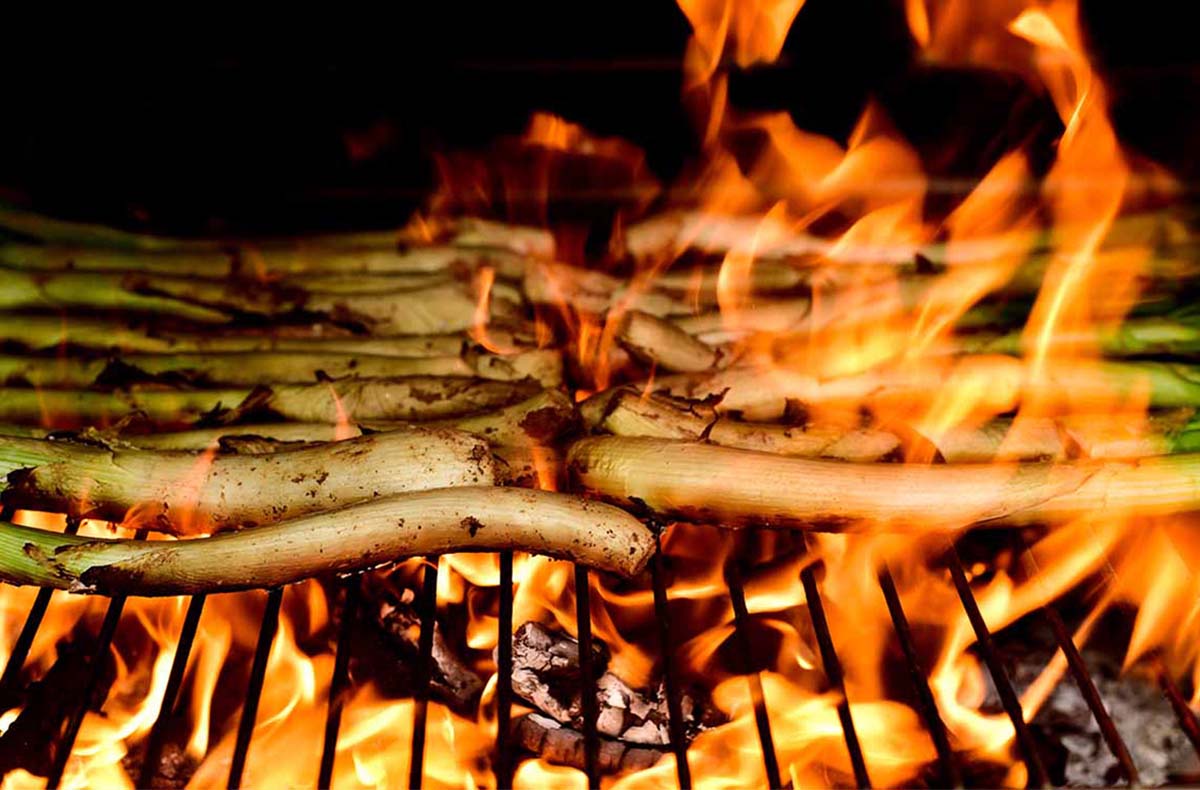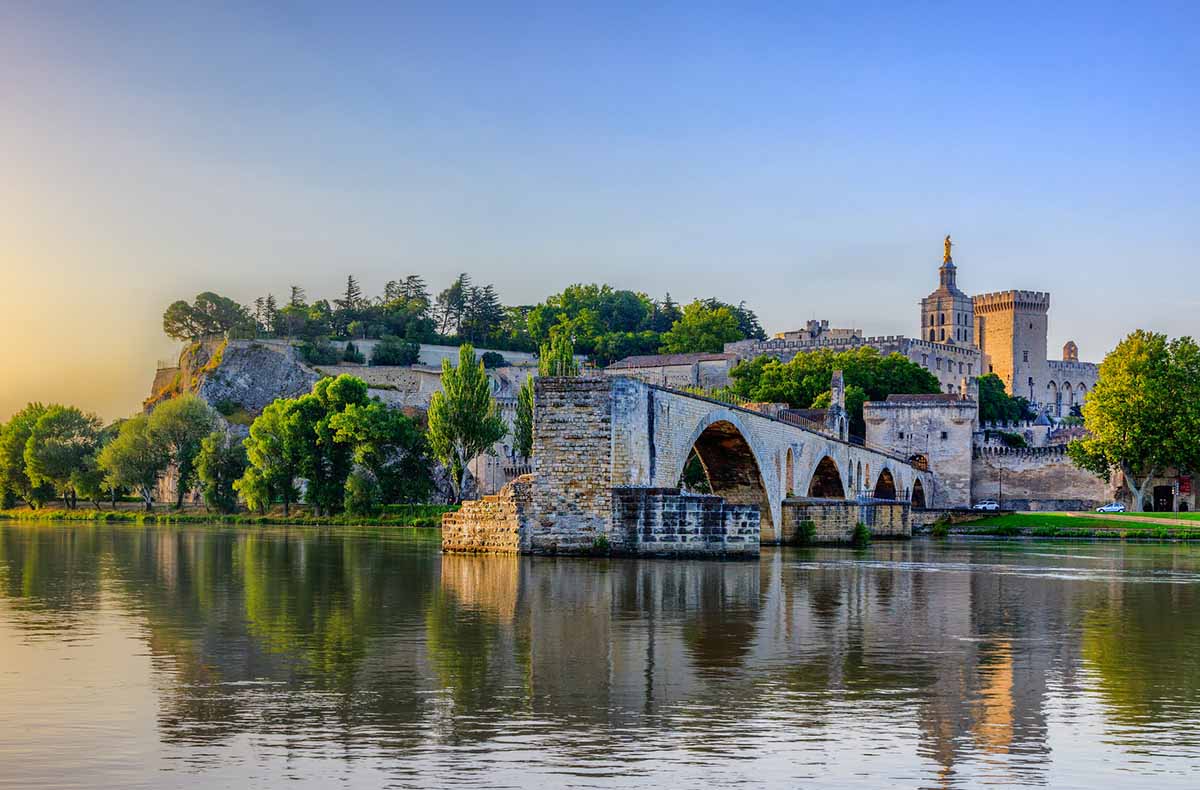
A calçotada is a party where you eat calçots, a kind of long, thin onion. The top leafy bits are green, the bottom oniony bits are white, and the whole thing turns crackled brownish when grilled. Grilling calçots is the headliner of every calçotada. It’s also important to drink a lot of wine and ruin your clothes—but those young spring onions are the reason for the party.
Calçotadas originated in the late 1800s near Valls, a city about an hour south of Barcelona. The basic formula for the party has changed little over the years: harvest large quantities of onions, let people know you’ve got them, and pick a weekend date. Some innovation is inevitable, of course. The first calçotada I attended had a Disney theme, and I arrived dressed as Ariel from The Little Mermaid (unconvincingly, as a Catalan friend noted to his disappointment).
But whether a calçotada took place last week or a hundred years ago—whether it happened in a neighborhood bar, your backyard, a fancy restaurant, a cousin’s farm—they are all connected by the thread of simple human joy, which is why calçotadas are so precious and lovely.
I’ve written previously for this magazine about the phenomenon of GastroJam HipFests, the cheerfully vacuous music-art-gastronomy festivals put on by municipalities that would like people to come out and spend lots of money, but can’t think of a unique reason why they should do so. GastroJam HipFests pop up one year and disappear the next because they have no compelling reason for their existence, aside from “might be kinda fun to check out if you don’t have anything else planned.”
Calçotadas are the exact opposite of this. And attending one gives you first-hand experience of what a world built around a different set of values might look like.
One of capitalism’s most effective scams is the illusion of unlimited choice. Say you’re feeling peckish for some breakfast cereal—just go to the store and see all the colorful boxes on the shelves. Never mind that nearly all of them are made by the same four companies and that (healthy lifestyle imagery on the packaging aside) even the ones marketed as “good for you” are basically just sugar-conveyance devices. So much of contemporary existence can be boiled down to a set of transactions in which we pay ever-increasing premiums for the comforting delusion that we have control over the course of our lives.
By contrast, a calçotada is not just a remarkably egalitarian event. It’s also a canvas for the kind of creativity that actually satisfies, inspires, and delights. Through the grilling of onions, calçotadas give us a model for a life worth living.
The traditional essentials of a calçotada provide the perfect amount of structure: enough to give a recognizable form to the celebration, but not so extensive as to constrict the participants. Some things are non-negotiable: you can’t skip the calçots, regardless of how ambivalent you might be about onions, because without them it’s just a barbecue. Nor could you, say, bake the calçots, even if you find grilling to be a tedious fire hazard. There are plenty of other things you should never do at a calçotada, most of them along the lines of “referring to a calçot by the name of a slightly different onion, or doing the same for its sauce.”
But aside from that? A calçotada is your oyster. You can invite the whole village, or just your immediate family. It can be an all-day bacchanal or a quiet get-together after church. Depending on your taste for themes, you might be wearing blue jeans, a traditional peasant’s hat, or bedazzled ballet tutu (or, if this particular calçotada is the kind that doubles as a wine-guzzling competition, perhaps all at once).
A calçotada has no VIP area or bottle service. If there’s a ticket required at all, it’s for general admission—it would be laughable to try selling premium seats for such a plebian affair. Everyone elbows in around the same long table, and everyone goes home farting and covered in salvitxada, the romesco-like dipping sauce. As a helpful soul noted on Wikipedia, it’s almost inevitable that whatever you wear to a calçotada will be stained.
In other words, a calçotada is both a social leveler and a kind of creative prompt. From its beginning, it had a clear inspiration (“Thank God winter is finally over and we have fresh vegetables to eat again!”) and a clear purpose (“The earth is coming back to life, let’s celebrate this miracle together!”). It has an eternal essence and infinite ways to be tinkered with, a party of Theseus finding new ways to rock throughout history.
At the same time, a calçotada never takes itself too seriously. It can’t—these are charred onions we’re talking about, in all their grimy and gassy and bad-breathed glory. To feast on calçots is to feast on life in all its simple and messy pleasures, and to deal with the after-effects as best you can.
Sometimes we really are all in the same boat together, and I think it’s no coincidence this is where the experience of being alive is most satisfying.



